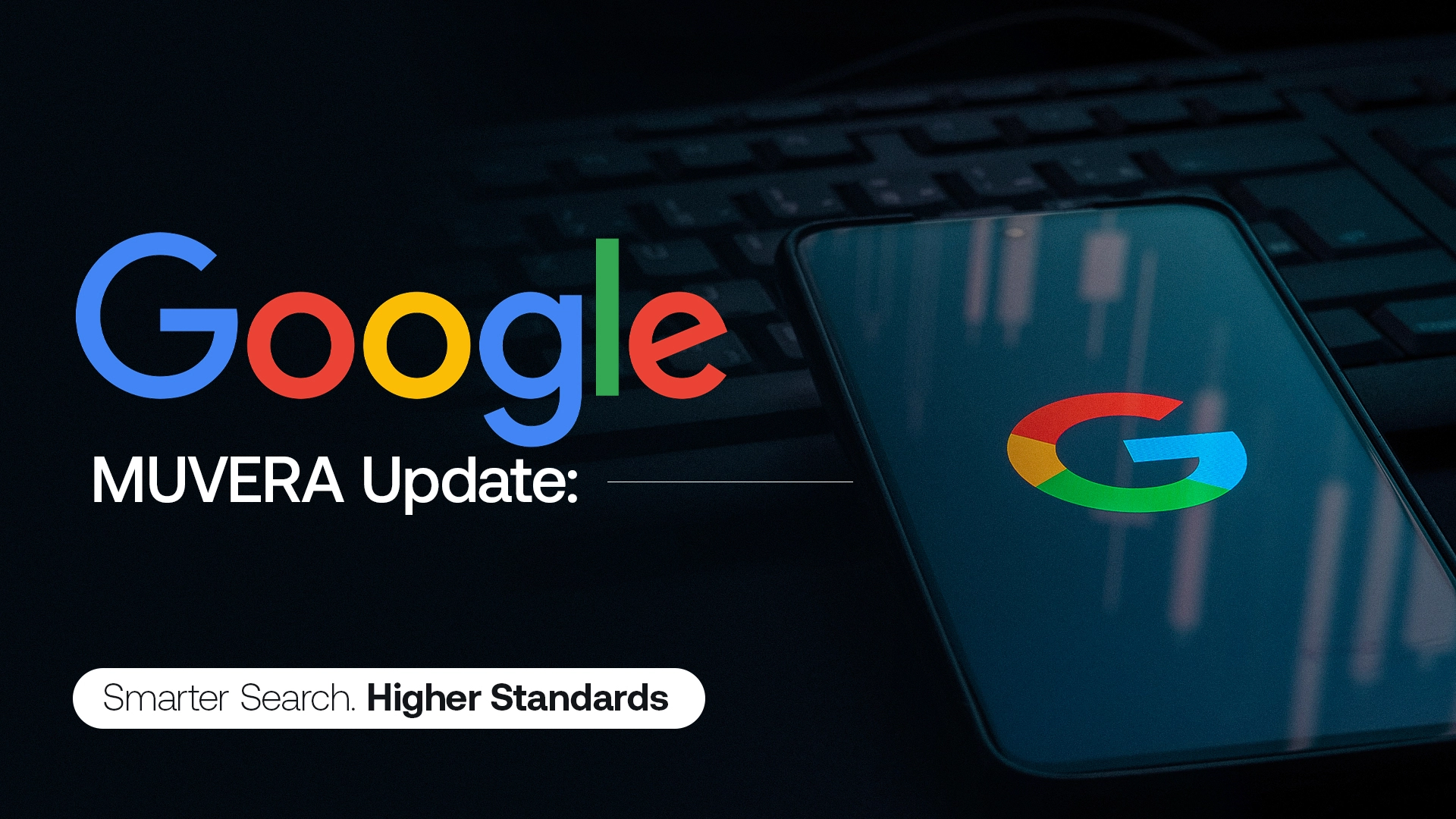Google MUVERA: Understanding the New Search Algorithm

Google’s search landscape just went through a big shift (again!) with the launch of the MUVERA Google update. Short for Multi-Vector Retrieval Algorithm, the Google MUVERA algorithm marks the beginning of a smarter, faster, and more context-aware search.
This breakthrough moves beyond old-school keyword matching and focuses on semantic understanding, context, and multi-dimensional relevance. If you’ve ever felt that search results sometimes miss the point of your question, this is Google fixing that.
Why Did Google Create MUVERA?
The MUVERA Google search algorithm was built to solve three challenges:
- Deliver more relevant results by understanding meaning and context, not just words
- Save time by being 90% faster than previous methods
- Match how people search today, which is often complex, conversational, and voice-based
People no longer just type “buy shoes.” They ask full questions like “what are the most comfortable running shoes for flat feet?” MUVERA is designed for these natural, multi-part queries.
What Is Google MUVERA?
The Google MUVERA update powers the June 2025 Core Update. Developed by Google Research scientists, it helps search handle complex, multi-faceted queries while staying fast and efficient.
Instead of just looking for keywords, MUVERA tries to understand what you’re really asking by breaking it into parts like topic, context, and action, and matching each part to the best answers.
“MUVERA makes multi-vector retrieval as fast and efficient as traditional single-vector search while preserving the rich, nuanced understanding that comes from multiple representations.” Google Research
What Is a Vector?
A vector is a digital summary of meaning.
For example:
Your page is about “healthy eating at home and work.”
Old Google summarized it as “healthy eating.”
MUVERA creates two summaries: one for “at home” and one for “at work.”
If someone searches “how to eat healthy at work,” Google surfaces the most relevant part of your page.
The MUVERA Algorithm Pipeline
Fixed Dimensional Encodings (FDEs)
What does this mean?
Imagine Google breaks your question into several ideas (like “eco-friendly”, “stroller”, and “travel”). Instead of searching for each idea separately, MUVERA combines all those ideas into one simple package (a “proxy” vector) that still represents everything you meant. This makes searching much faster.
Example:
You ask: “Best eco-friendly portable stroller for travel.”
Google creates a special code (FDE) that sums up all those features in one place, so it can search super quickly for results that match everything you want.
Maximum Inner Product Search (MIPS)
What does this mean?
This is a fancy way of saying that Google can quickly compare your “proxy” code (FDE) with billions of web pages’ codes and instantly find the closest matches.
Example:
Let’s say your FDE is like a fingerprint of your question.
Google checks which web pages have a “fingerprint” most similar to yours, in less than a second!
Re-ranking by Chamfer Similarity
What does this mean?
After finding a shortlist of best matches, Google double-checks by looking even closer at the similarities. It reorders (re-ranks) the results so the answers that fit your question in all details show up at the top.
Example:
From your search, Google finds 20 possible strollers.
It now checks how well each one matches your need for “eco-friendly”, “portable”, and “best for travel”- not just overall, but for each part of your request.
The one ticking all the boxes goes to the very top.
Also Read – Latest Google Core Update June 2025
MUVERA Steps Simplified
| Step | Simple Explanation | Example in Search |
| FDEs | Bundle all your ideas into a search “code” | Combines “eco-friendly”, “stroller”, and “travel” into one search strategy |
| MIPS | Quickly match your code to web pages | Instantly finds pages with the most similar “codes” |
| Chamfer Re-ranking | Fine-tune the results order | Makes sure the top-listed stroller fits ALL your needs |
Why Is MUVERA a Game-Changer?
Speed and Efficiency
- 90% faster, yet 10% more accurate
- Handles rare, niche, and conversational queries better
Semantic Depth
- Understands context, implied intent, product attributes, and topic hierarchies
Better Voice and User Search Experience
- Designed for natural language and multi-intent voice queries
The SEO and Content Impact of the MUVERA Google Update
Google’s Guidelines Are Evolving
With the MUVERA Google update, Google emphasizes E-E-A-T: Experience, Expertise, Authoritativeness, Trustworthiness.
It now prefers authentic, well-written, comprehensive content over keyword-heavy pages.
Actionable Steps for Website Owners
- Build topic clusters by organizing your site around related, in-depth topics
- Show real expertise through credentials, reviews, and accurate advice
- Write for multi-intent by covering all parts of a user’s likely questions
- Upgrade technical SEO to ensure your site is fast, mobile-friendly, and accessible
- Use schema and structured data to help Google understand your content fully
Also Read – Google New AI Mode 2025: What’s New & How to Use It
The Google MUVERA algorithm is not just another update. It’s pretty much the foundation for the next generation of search.
What does it mean for users: Smarter, faster answers.
What does it mean for brands? Highlighting expertise, trust, and content that is relevant and meaningful.
At AdLift, our strategies we help brands stay ahead of updates like the Google MUVERA update and all the other algorithm updates that Google keeps throwing our way.
Let’s future-proof your SEO. Get in touch today.
